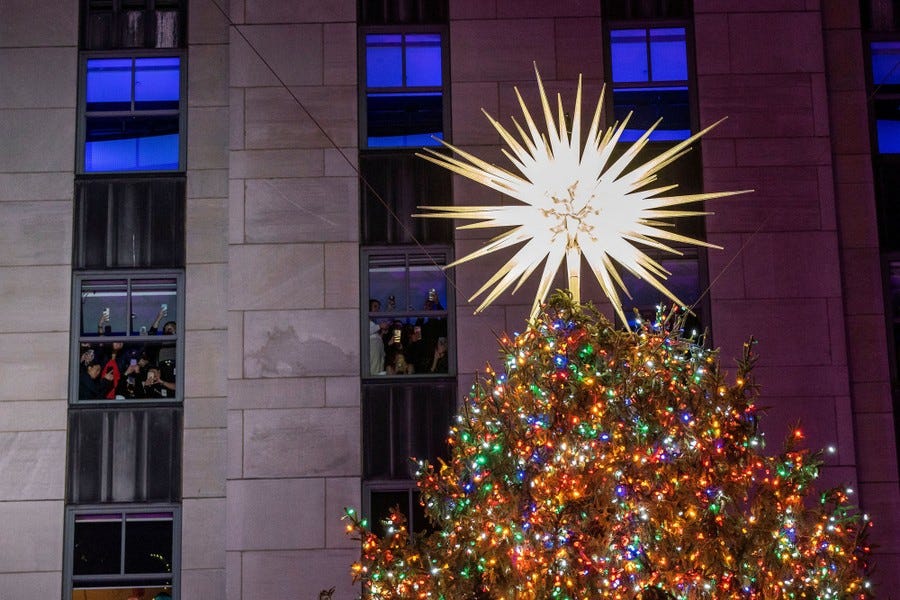The Top 5: Friendship, urban planning, plastic pollution, behavioral economics & Big Houses
Plus, catch up on Wear We Are

Welcome to the latest edition of the Top 5 articles we’ve read this week. Each week, we read dozens of articles in the hope we find essays and reporting that speak to big ideas, trends, future looks, and incredible human stories. We hope you enjoy our list, and do always let us know if you have a suggestion or a recommendation!
We are now less than a year out from the 2024 election, and we will be putting a lot of thought into our coverage and analysis. Please consider becoming a paid subscriber if this is one of those newsletters you open up all the time or look forward to each week. We couldn’t do this work without our paying subscribers and encourage you to make the switch from free to paid. We have a student/educator discount as well!
The Top 5 articles for your week:
“Friendship as Soulcraft” (Hedgehog Review)
Because Matt Dinan relatably writes about making friends as an adult.
Is it more embarrassing to admit that you were the friendless thirtysomething, or that you made friends on the social network formerly known as Twitter? Well, during the pandemic, suddenly and for longer than we wished, that notoriously toxic platform became an ersatz salon for everyone stuck at home. I tweeted a lot: about the trials of homeschooling, about how parental happy hour kept creeping up earlier in the day, about teaching online, about my alarming Takis addiction, about my uncertainty and anxiety and loneliness. The candor, I think, along with my awareness of the urgency to try to make friends, provided conversational openings for people feeling the same way, but I also found people who wanted to talk about all or most of these things. My direct messages—another legacy Twitter feature, if you can believe it—started filling up with all sorts of conversations.
“Sick City” (Aeon Magazine)
Because this essay from Katie Mulkowsky examines the impact of Robert Moses’ urban planning in NYC.
Along with the South Bronx, neighbourhoods like Brooklyn’s Sunset Park and Manhattan’s West Harlem today have higher geographic concentrations of polluting infrastructure, such as major highways, power plants, incinerators and waste transfer stations, than their wealthier counterparts do – predisposing some of the city’s poorest and most diverse communities to the worst health outcomes. Knowing this, on a professional and a personal level, has compounded the magnitude of my grief with the exasperation of having seen something coming for a long time.
“A Few of the Ideas About How to Fix Human Behavior Rest on Some Pretty Shaky Science” (NYT)
Because Leif Weatherby calls out behavioral economics.
Despite all its flaws, behavioral economics continues to drive public policy, market research and the design of digital interfaces. One might think that a kind of moratorium on applying such dubious science would be in order — except that enacting one would be practically impossible. These ideas are so embedded in our institutions and everyday life that a full-scale audit of the behavioral sciences would require bringing much of our society to a standstill. There is no peer review for algorithms that determine entry to a stadium or access to credit. To perform even the most banal, everyday actions, you have to put implicit trust in unverified scientific results.
“How to end plastic pollution on Earth for good” (WaPo)
Because Tatiana Schlossburg talks about how “Last year, more than 175 countries agreed to develop a legally binding international treaty to end plastic pollution by 2040. And new research demonstrates that it is actually possible: with a combination of nine policies, countries could reduce annual plastic waste by more than 87 percent.”
- )
Because Paul Kingsnorth covers the interesting religious history of “Big Houses” in Ireland.
Between 1916 and 1923, during the Irish revolution and ensuing civil war, an estimated 275 of these ‘Big Houses’, most of them the homes of hated Anglo-Protestant landlords in overwhelmingly Irish Catholic areas, were burned to the ground by the IRA…What it means on the ground is that today’s Ireland is not only studded with the remains of Big Houses, but with the remnants of other things associated with them: untended graveyards, empty Protestant churches, rotting farm buildings, silent stable blocks - and sometimes, forgotten holy wells.
ICYMI on Wear We Are
Episode 90: We answer listener questions (Part I)
The Morning Five: November 27, 2023
The Morning Five: November 28, 2023



